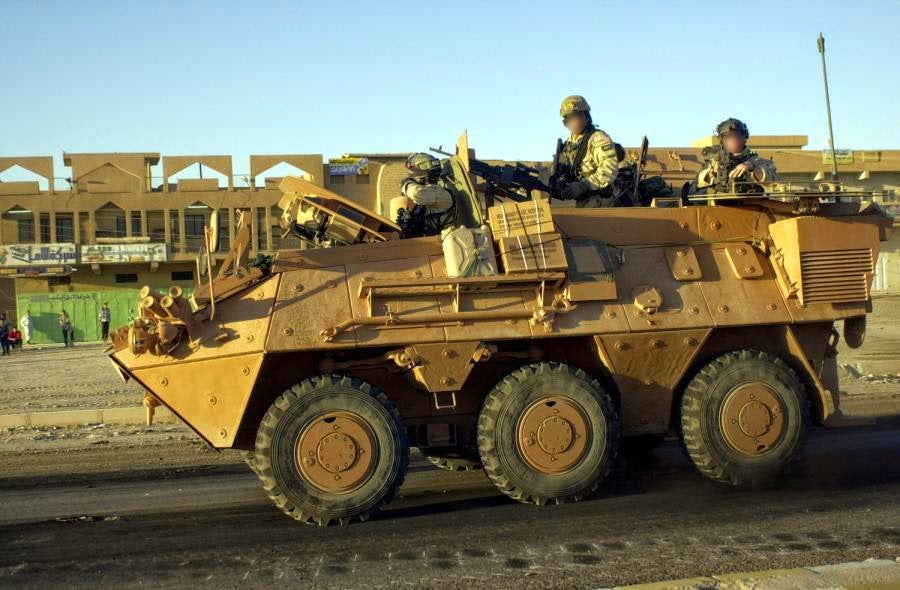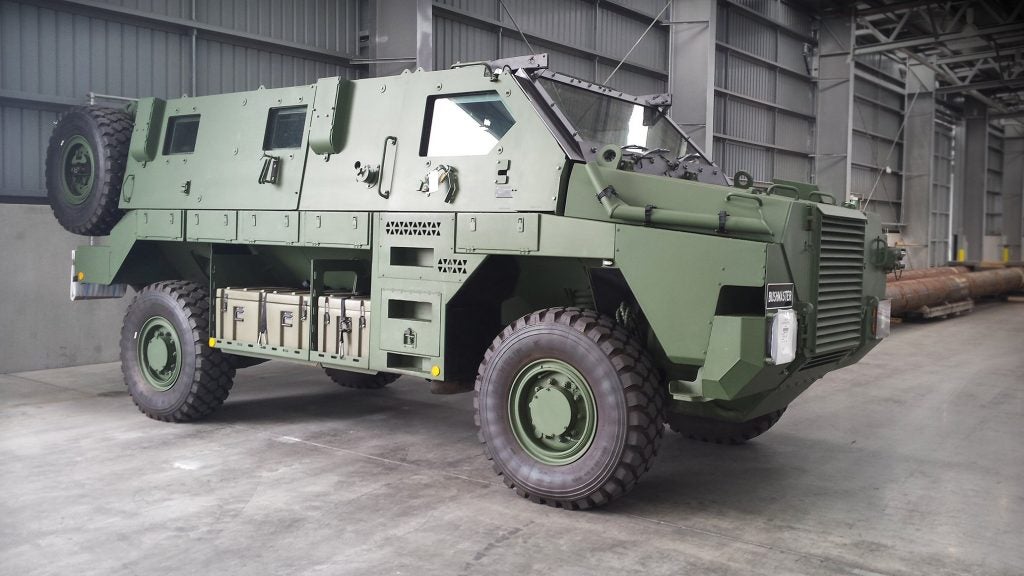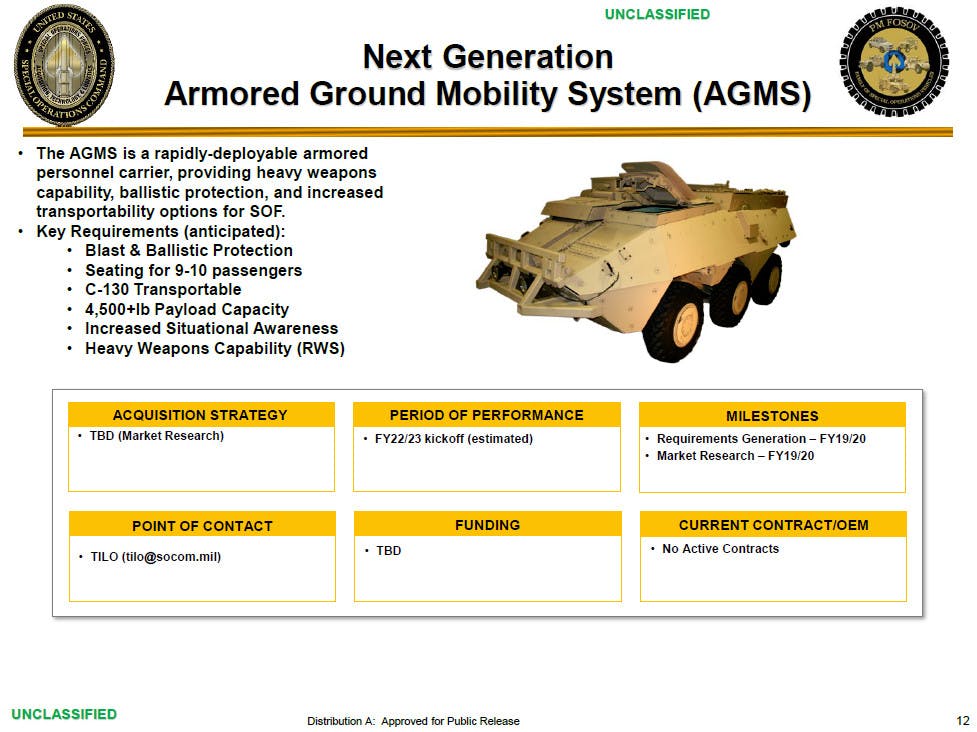SOCOM Looking for new Joint Armored Ground Mobility System
US Special Operations Command (SOCOM) have posted a request for information (RFI) to industry for their next generation replacement for the Pandur I based Armored Ground Mobility System (AGMS). The AGMS is currently in service with Joint Special Operations Command (JSOC), primarily with 1st Special Forces Operational Detachment- Delta, more popularly known as Delta Force.
The Pandur AGMS has been in service with Delta since around 1999 after years of often heated debate within the unit following the Battle of Mogadishu in October 1993 where Delta and the Rangers were forced to employ predominantly unarmoured Humvees. At the time, Delta used the 6×6 Pinzgauer as their primary platform for long range reconnaissance and covert insertions however the Pinzgauer lacked armour. A dozen AGMS were eventually procured with a further 11 purchased in 2006 after their usefulness in Iraq as raiding platforms was fully realised.
Delta have modified their Pandurs over the years, most visibly by adding a ballistic glass driver’s module to improve situational awareness, applique armour packages, and CROWS remote weapon stations (RWS). At least one variant seen in Syria in 2017 mounted a TOW II anti-tank guided missile launcher to enable crews to engage Islamic State suicide bomb vehicles at range, including heavily armoured versions based on BMPs and T-55s. Another sported an M134 minigun, useful against Islamic State’s ad-hoc armed drone fleet.

The successor to the Pandur is termed the Joint Armored Ground Mobility System (JAGMS), likely as the platform will now be purchased and employed by Naval Special Warfare Development Group or SEAL Team 6 who used the Pandurs on occasion in Iraq. The RFI describes it as a “Heavily Armored C-130 Transportable Vehicle” and the ability to be transported within an MC-130 remains key.
Additionally the RFI spells out other broad requirements including the “… capacity to transport nine (9) to eleven (11) operators.” The current AGMS can only really carry perhaps seven operators with their equipment in reality or two stretchers/litters. Operators have long identified that a platform better suited for carrying stretchers/litters would be advantageous. A larger transport capacity would also assist in transporting detainees (on at least one occasion, detainees were transported externally on Pandurs in Iraq as there was simply no room left inside due to the presence of stretcher/litter wounded operators).
The prospective JAGMS also needs to meet or exceed “Survivability requirements listed in the Survivability Requirements Annex”. The Annex is understandably classified but the ability to up-armour the new platform for a range of threat levels is likely. A V-shaped hull is also a likely requirement. Pandurs struck by improvised explosive devices (IED) in Iraq could generally limp home under their own strength due to their 6×6 configuration and run-flat tires and blast seats and custom under-armouring were fitted as the IED threat increased.

There are a number of platforms that could be JAGMS contenders. An obvious frontrunner is the Thales MR6 variant of the Bushmaster Protected Mobility Vehicle. Bushmasters have been employed by a range of special operations forces including the British Special Air Service (SAS) and is well-liked by the operators. The new MR6 version, also a contender for the British Army’s Multi-Role Vehicle Protected (MRVP) program, offers a reconfigurable troop compartment, improved ballistic and blast protection, better situational awareness, increased operational range, and the capability to mount heavy weapons such as 30mm cannon in RWS mounts.

